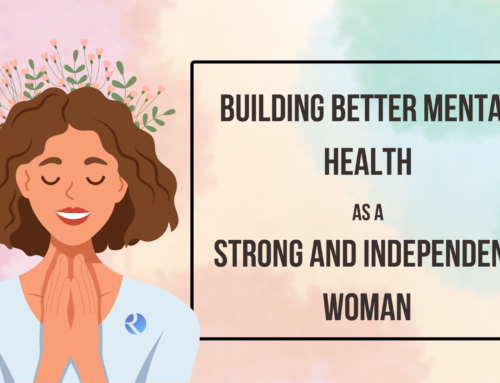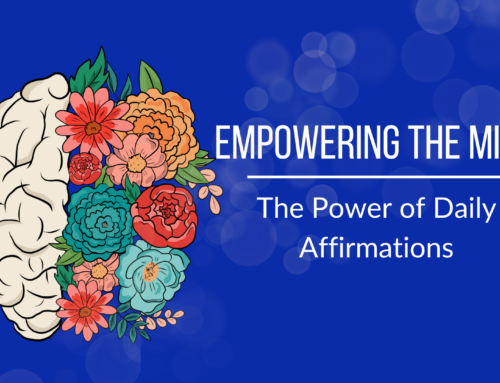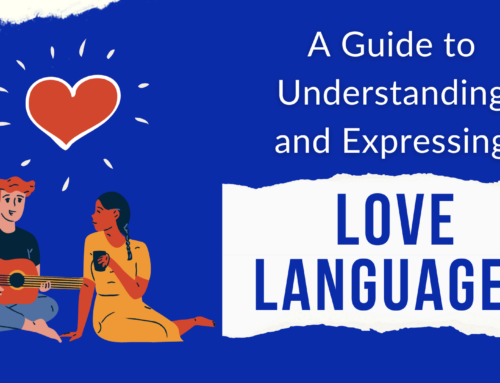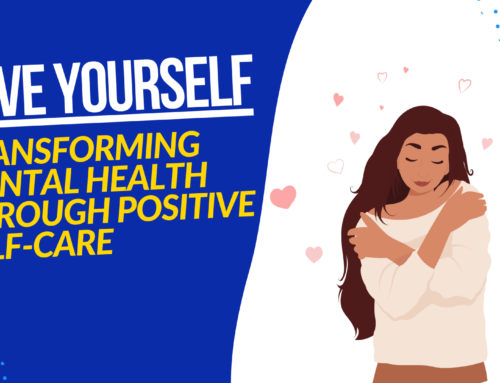
What is rREST?
How many of you recognize that we’re getting inundated every day with negative information, uncertainty, and just all kinds of challenges. On top of that, our work stresses, we have people issues, we are juggling family and work trying to get a balance but everything’s just a roller coaster riding on high-stress levels and, of course, lower quality life.
What if I told you about a technique that will help you calm down in only a few minutes. Just think about it? What if you could go from being overwhelmed and stressed to wholly relaxed and calm in minutes? That, my friend, is the Rapid Reprogramming of Emotional Stress Technique.
Three Keys To Clearing Out Mental Clutter
Do you know that little voice in your head that gets stuck on things? Or the bad habit you can’t seem to break? It’s called mental clutter.
Mental clutter is the accumulation of thoughts and memories that we find hard to let go of; it’s all those things we’re afraid to let go of, whether for fear of being judged or for not knowing what will happen if we do let them go.
You can learn to identify mental clutter and move it from your mind. Here are three keys:
Become Aware Of It
Remember that you can choose what you think about. If you let the voices get loud, they’ll stop being so persuasive, and you’ll be able to hear the true ones.
Surround yourself with people who unclutter their minds and make it a priority so that their brains don’t become cluttered with junk.
Believe it or not, one of the best ways to get rid of clutter is by cleaning out your mind — by thinking only positive thoughts and changing how you perceive events in your life; it will gradually become easier to do this for other things as well.
Avoiding Clutter
When it comes to avoiding clutter, we’re talking about preventing information overload. If you can learn how to deal with information efficiently, then you won’t have as much information accumulating in your head.
The first step in dealing with information is to be selective about what you allow into your life in the first place. Is there any television show that isn’t more important than your goals? Why do you read specific blogs? Is it because they provide you with helpful information or simply because they titillate your fancy?
You should evaluate every piece of information you allow into your life for its relation to an important goal. Don’t bother with it if it doesn’t relate to an essential purpose. A significant reason why people have trouble clearing out their mental clutter is that they’ve allowed too much clutter into their lives in the first place.
Remove the unnecessary clutter from your life
The single most significant factor in your productivity is how much time you spend thinking. While we may think of our brains as these powerful, giant computers, they’re just a swift collection of virtual circuits immediately triggered by specific stimuli.
The more time you spend worrying about things that aren’t important, the less time you have to do what’s most important: focusing on what’s truly important.
Now I’m not saying that you should focus all of your thoughts on the task at hand, but if you can identify the one or two ideas that are saving you time, get rid of those thoughts, and focus on the task at hand, then you’ll be able to accomplish a lot more in a shorter amount of time.
The Benefits of rREST
Many of us carry around a load of emotional baggage from the past, which can make our lives very difficult. This emotional baggage can manifest itself in many ways. For example, you may have anger issues, overeat, avoid social situations or never quite feel happy for no apparent reason.
You don’t have to live this way.
Relaxation – By learning to relax and let go of tension in your body, you can feel better both physically and mentally. In addition, the more relaxed you feel, the less likely you are to experience stress-related health problems such as high blood pressure or heart disease.
Clarity – Stress often causes mental confusion and difficulty focusing on tasks. Using rREST will allow you to clear your mind and think more clearly. You will be able to make better decisions about your life and what direction it is going in because all of the mental fog has been cleared away by deep breathing exercises used during this technique.
Optimism – with rREST you are more optimistic about your future and your ability to succeed in life. When people are confident about their future, they tend to take action and do things that will help make their dreams come true.
Confidence. When you let go of negative emotions, they no longer have power over your decision-making or choices. This leads to increased confidence in your ability to deal with life’s challenges in a healthy way.
Better health. Because stress is linked to many diseases and illnesses, stress reduction techniques can help improve overall health. It’s believed that rRest has the potential to lower blood pressure, improve digestion, and boost immunity.
rREST increases emotional stability. People who train with rREST find that they are less reactive to the stresses and strains of daily life, and as a result, their relationships improve. They can respond to challenges in creative ways because they are more emotionally stable.
Better performance at work and in your home life is another benefit of rREST training. It allows people to be more productive at work because they have much greater self-control and better focus on whatever task they are performing. In addition, it reduces the need for breaks during the day and results in increased productivity.
What is the Scientific Basis of Rapid Reprogramming of Emotional Stress Technique (rREST)?
The science behind rREST is that a specific type of memory exists in our brain, called implicit or procedural memory. Implicit memory is the type of memory we use without even knowing it. Things like learning to ride a bike, swim, or remember how to walk are all examples of implicit memories. This type of memory exists in our brainstem and cerebellum (lizard brain), and it doesn’t have a timestamp, unlike the kind of memory we use every day (explicit memory).
Due to this lack of timestamp, the only way this implicit memory can be accessed and updated is via biofeedback, which can identify it by its emotional signature. Once we identify and isolate this implicit memory with biofeedback, it can then be updated/reprogrammed with new information that makes more sense and improves our ability to respond calmly to future stressors.
How Does rREST work?
Sometimes we have memories that are still attached to a negative emotion that’s not healthy. We’re stuck there. And what we do with rRest is we take these items out of the emotional part of your brain and put them in the logical part of your brain.
The first step is to recall the memory that you want to change. You’ll see a specific event in your mind and feel it emotionally. This is called a memory recall. While you’re experiencing this memory recall, you will take one hand and put it on your belly and one hand on your heart. Then we’re going to induce a release by taking a breath and saying “r.”
The second step is to reconnect the memory with a new emotion. The way this works is that you’re going to take that memory that’s living in your emotional brain (we’ll call it your lizard brain), and you’re going to breathe into it while saying three times: “I release, I let go, I move on.”
When you say this, your logical brain connects it to another part of the brain; we’ll call it the connecting brain. So for the geeks out there, your rational brain is your prefrontal cortex, and the connecting brain is your hippocampus.
The connection between these two areas of your brain is a neural pathway. Neural pathways are like roads in your brain that can be traveled along. Neurons in your prefrontal cortex surround the neurons in your hippocampus, and they are connected with the axons of neurons that go back and forth.
So when you repeat a statement or a thought to yourself, it’s like you’re sending messages down that neural pathway in the form of electrons and chemicals that connect those neurons and make them stronger.
How to Apply rREST in Our Daily Lives
There are a lot of applications to this. I’m excited about the business applications, but there are also applications to everyday life.
I think it’s essential that people understand that you need to rest and recover every day. We can’t just constantly be in a state of stress. It will eventually lead to exhaustion and burnout, which we see in so many people these days.
It’s not just about relaxing, either. It’s about recognizing the changes you’re making in your life and learning how to get used to that change without stressing it. So if you’ve switched jobs, if you’ve changed cities, even if you’re in a new relationship — all of those things will cause some amount of stress and some amount of change in your life. The better you become at managing that stress and managing those changes, the more successful you’ll be in those areas of your life. And that’s fantastic.
Who Needs rREST?
Are you ready to get a handle on your life? Are you tired of being bogged down with the same problems repeatedly? Are you looking for a different way of dealing with stress, anxiety, depression, trauma, anger, or other issues? Are you looking for better relationships? Do you want to feel more joy in your life?
If you’re a normal human being, you’ll experience stress in your life. We all have some anxiety, whether it’s due to work, relationships, health, or money.
Stress is a natural response from the body to environmental demands. Stress can come from negative and positive events (such as planning a wedding or moving home).
The problem arises when this natural response becomes abnormal (frequency, intensity, and duration). At this point, your health is likely to be affected by stress. You may feel physically unwell, emotionally drained, and mentally exhausted.
If you’re suffering from physical symptoms of chronic stress, then rREST is for you!
rREST is a new technique that allows someone to quickly and easily shut off their fear response and other unconscious emotions, using any stimulus as the trigger. This can be used in conjunction with all existing technologies and skills, even in those damaged by trauma previously.





